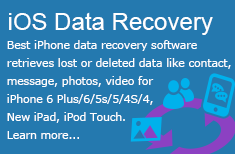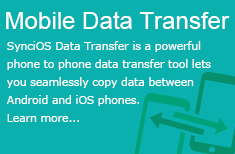5
Dec 19
iPhone, Galaxy S, Pixel: How smartphones evolved to dominate your life
We bet you couldn’t quit your phone even if you wanted to.
Internet communicator was a landmark moment in the tech world. It crystalized the iPhone’s almost mythic reputation from the start — remember the nickname, the Jesus phone? — and helped usher in the idea that smartphones could be chic. But looking back, those three capabilities barely scratched the surface of what we can do with the modern smartphone.
What can you do with one now? Everything.
“We never imagined how a decade later iPhone would become such an essential part of our lives, from streaming TV shows and playing games, to finding directions when traveling, to managing health and fitness, to opening garages in smart homes, to sharing beautiful memories with stunning photos and videos,” Phil Schiller, head of marketing for Apple, said in an email.
As CNET explores the impact of various technologies over the past decade, none has changed our lives as dramatically as the smartphone. When the original iPhone launched, and the first Android phone, the G1, followed in 2008, they were still the stuff of gadget enthusiasts with loads of disposable income. Even 10 years ago, at the launch of the Motorola Droid — the first Android phone to enjoy mass appeal, thanks to a massive marketing blitz by Verizon Wireless — we were just getting started with the potential that came with smartphones and mobile applications.
Nowadays we take for granted that we have a virtual supercomputer in our pockets. Our iPhones and Android handsets let us hail a car right to our location, draw from a library of hundreds of thousands of television shows and movies stored online, or livestream our silly antics to millions across the world. You can shoot down cartoonish avatars of your friends in Fortnite. They’ve literally been revolutionary, with secure messaging apps playing a role in the Arab Spring movement in the early 2010s and the Hong Kong protests against China playing out today.
“We never imagined how a decade later iPhone would become such an essential part of our lives. “ — Phil Schiller, head of marketing for Apple
Think about it: What’s the one thing you can’t leave your home without? Chances are, it’s your smartphone. It’s become such a critical part of our lives that we’re starting to question whether we’re spending too much time on them. Tech giants like Apple and Google have even introduced ways to tell you how much time you’re spending on your phone — with apps found on the phone
“It’s astonishing how quickly we’ve gone from being astonished to having an always-connected supercomputer in our pockets to somewhat resenting having a supercomputer in our pockets,” said Avi Greengart, an analyst at research firm Techsponential.
No matter where you stand on the spectrum of smartphone dependence, it’s undeniable the staggering impact they’ve had on society, culture and how we live our lives.
“A lot has changed since 1.0,” Stephanie Cuthbertson, director of Android, said during her Google I/O keynote speech in May. “Smartphones have evolved from an early vision to this integral tool in our lives, and they are incredibly helpful.”
Clumsy to coveted
Smartphones had been around for years before iPhones and Android handsets became the default mobile devices of choice. The white-collar crowd happily tapped on the physical keys of their BlackBerrys. Old-school gadget enthusiasts would’ve proudly shown off their Palm Treos or their “Pocket PC” phones (with a stripped-down version of Windows jammed behind a smaller screen). Never mind that these devices required a precise stylus to navigate.
In 2007, Jobs and the iPhone changed the meaning of a smartphone, making a touchscreen device intuitive — and fun — to use, thanks in large part to the full browser experience and tricks like pinch to zoom. It’s the only phone that I could pull out at a bar and legitimately impress women with. (That still wasn’t enough help.)
In July of 2008, Apple introduced its App Store, opening it up to third-party apps. Google would follow with the G1 smartphone (also known as the HTC Dream) and its own app store a few months later. The G1 catered more toward gadget enthusiasts and lacked the mass appeal of the iPhone, but it was no less influential as the launchpad for Android.
Today, there are more than 2.5 billion active Android devices out there, making Google’s OS the most dominant platform in the world.
“Today, everyone has a smartphone, and that’s amazing,” said Peter Chou, co-founder and former CEO of HTC, which built the G1, who stood on stage with Google co-founders Sergey Brin and Larry Page when the device was unveiled.
But it wasn’t until the debut of the original Droid, which next month celebrates its 10th anniversary, that Android catapulted into the mainstream, thanks in part to a huge marketing campaign from partners Google, Verizon and Motorola.
Upping the ante even further, Samsung jumped into Android in 2010 with a willingness to build up its Galaxy S franchise by way of an even more impressive marketing push, which created the two-horse dynamic we see today (Apple vs. Samsung, Apple’s iOS vs. Google’s Android).
“It’s exciting to reflect on 10 years ago launching the first Galaxy S smartphone,” said Drew Blackard, head of product management for Samsung Electronics America. “Over the past decade, we’ve introduced a number of industry-leading innovations that have given our consumers a better mobile experience and changed the way we think about smartphones.”
 Buy or sell a logo
Buy or sell a logo iOS Data Recovery
iOS Data Recovery Mobile Data Transfer
Mobile Data Transfer